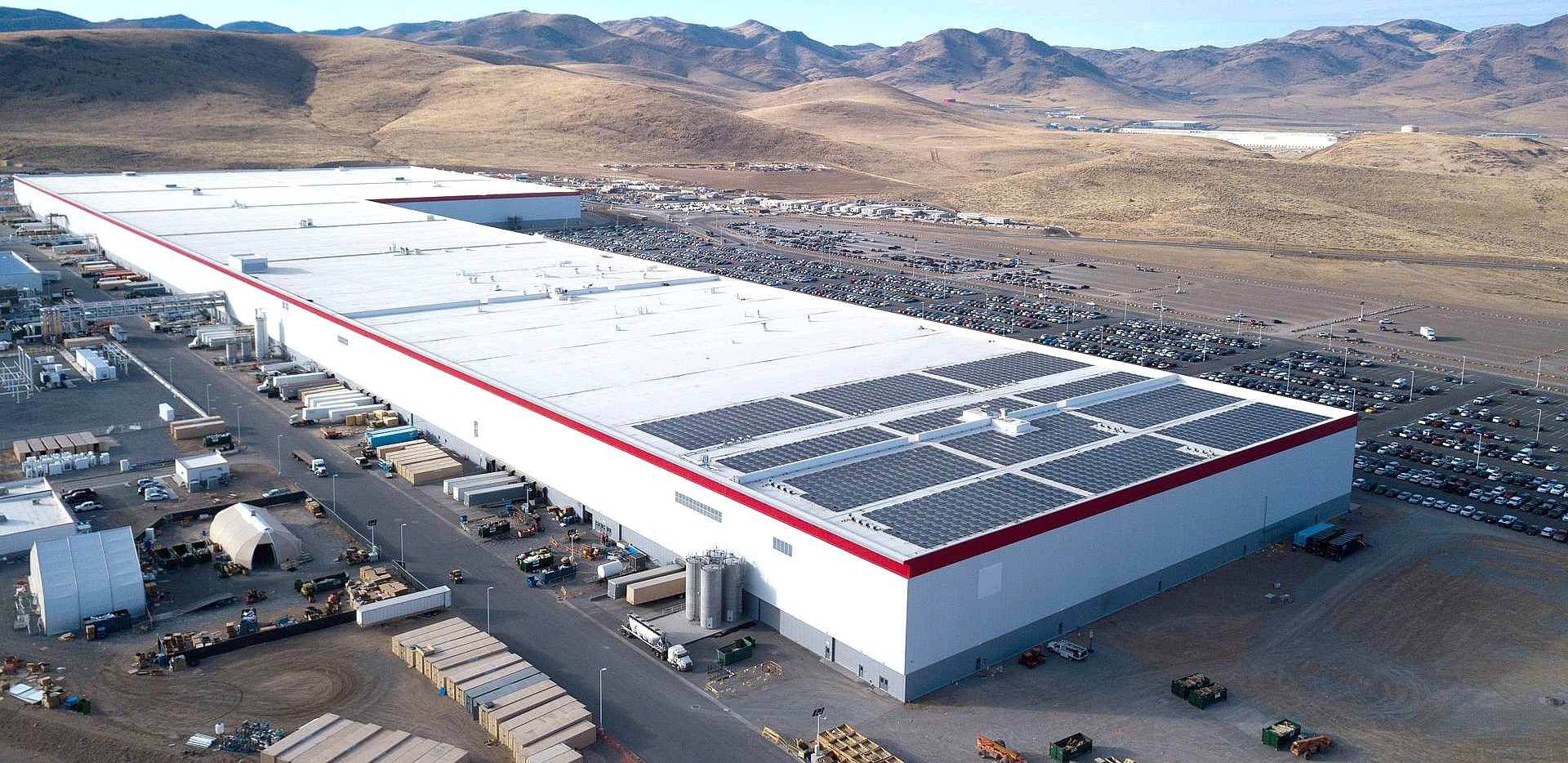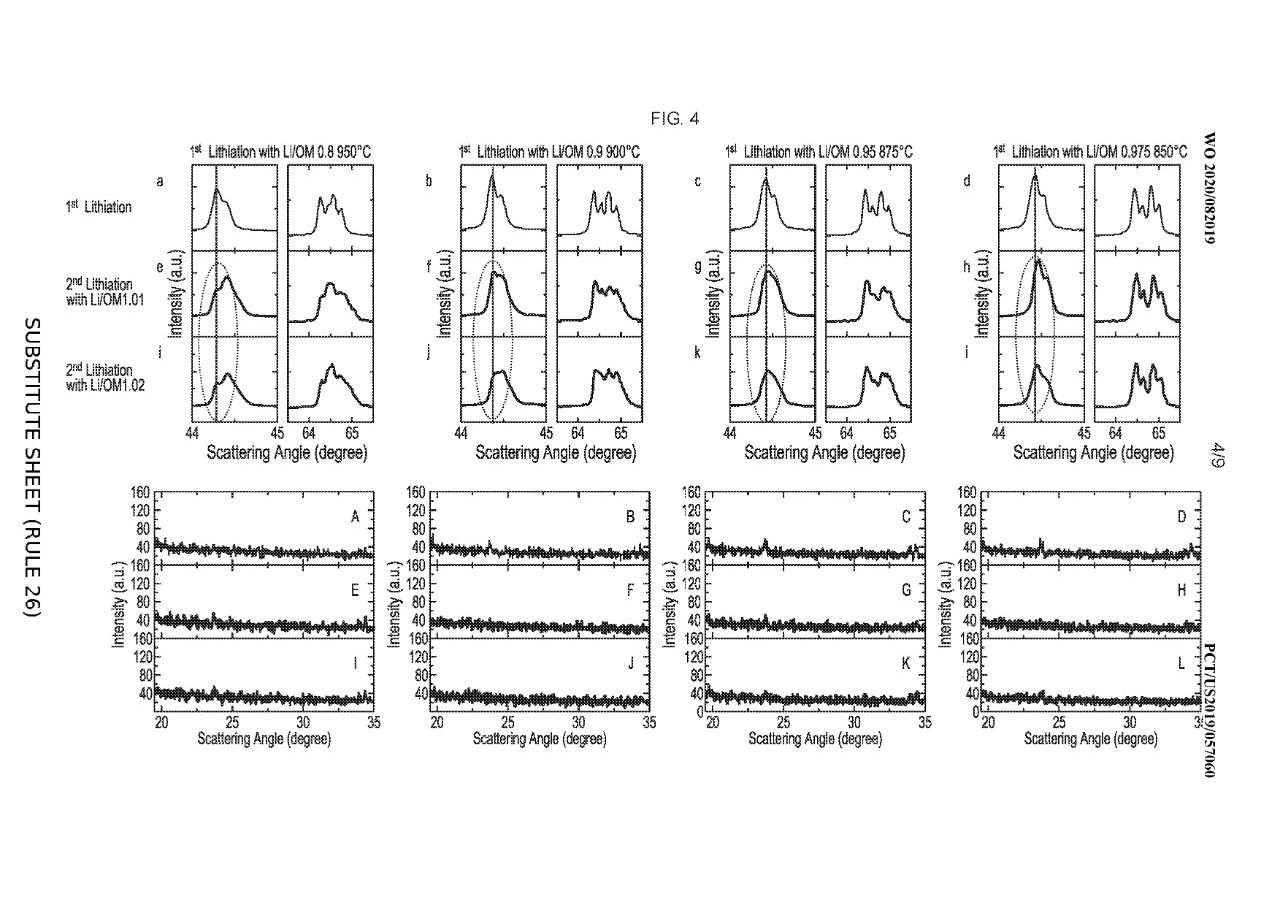

News
Tesla’s 1 million-mile battery takes a step forward with new electrode patent
A newly released patent from Tesla has teased what appears to be a step towards Elon Musk’s one-million-mile battery target. The patent describes a new lithiation process for battery cells, which has the potential to improve the quality of cells and possibly even save on costs.
Tesla has submitted a patent titled “Method for Synthesizing Nickel-Cobalt-Aluminum Electrodes.” The document outlines a new electrode synthesizing method that could be used for battery cell production. The proposed application defines an efficient heating process for Nickel-Cobalt-Aluminum (NCA) electrodes. According to the document, previous heating methods at times cause the formation of a lithium substrate known as L15AIO4, which is an impurity. Lowering the amount of lithium within a battery reduces the presence of the contamination, but also leads to “materials with inferior electrochemical properties.”
As noted in the patent, batteries would heat to a temperature high enough to allow for single crystal growth. The revised ratio of lithium to other metals would limit the formation of impurities during the first heating process. Then, the battery would be heated a second time at a temperature lower than the first heating cycle. Researchers involved in the patent noted that this process helped develop an impurity-free single crystal NCA that allowed battery cells to achieve over 4,000 charge cycles.

The patent outlines the heating process:
“Methods disclosed herein include a first lithiation step, wherein a lithium and an other metal component are present in a first lithium/other metal ratio of less than 1.0 and are sintered at a temperature between 800 and 950°C for a time period between 1 and 24 hours to obtain a first lithiated material. The method further includes a second lithiation step, wherein a lithium and a other metal component are present in a second lithium/other metal ratio and further wherein the first lithiated electrode material is sintered with additional LiOHTLO at between 650 and 760°C for a time period between 1 and 24 hours to obtain a second lithiated material.”
In summary, the use of NCA electrodes in batteries would allow for single-crystal materials to present themselves without impurities. The lack of contaminants could lead to an increased lifespan of the cells altogether, helping Tesla take a giant leap forward in its quest to produce a one-million-mile battery for its vehicles.
Interestingly enough, one of the listed names on the patent is battery expert and researcher Jeff Dahn, who has worked with Tesla in the past. Tesla summoned the help of Dahn, who leads a team of researchers at Canada’s Dalhousie University, to help the electric car maker improve its batteries. Dahn’s research has helped Tesla’s development of high-quality battery cells by inventing new electrode combinations, like the one described in this patent, and electrolyte solutions aimed at further increasing battery life.
Tesla’s batteries are always in a state of improvement, and over the years, the cells that the company utilizes for its vehicles and energy storage systems have gotten more energy-dense. Economies of scale that is made possible with facilities such as Gigafactory Nevada have also gone a long way towards helping Tesla near the $100 per kWh mark, a level that is widely considered the point where electric vehicles could achieve price parity with their internal combustion-powered counterparts.
Apart from its battery patents, Tesla has also been busy acquiring several battery companies. Among these are Maxwell Technologies and Hibar Systems, both of which were developing technologies that would allow for better battery quality and more efficient production costs. Relatively simple developments such as those described in Tesla’s recent patent help this cause too, especially since every little bit of optimization helps.
Tesla’s development of its battery technology could lead to its vehicles lasting 20 to 30 years, far longer than petrol-powered cars. It appears the company is planning to create a product line that could stay with owners for extended periods with relatively no annual maintenance. And that, together with price parity, can very well be the catalyst for society’s acceleration towards sustainability.
The full text of Tesla’s “Method for Synthesizing Nickel-Cobalt-Aluminum Electrodes” patent could be accessed in the document below.
METHOD FOR SYNTHESIZING NIC… by Joey Klender on Scribd
News
Tesla cleared in Canada EV rebate investigation
Tesla has been cleared in an investigation into the company’s staggering number of EV rebate claims in Canada in January.

Canadian officials have cleared Tesla following an investigation into a large number of claims submitted to the country’s electric vehicle (EV) rebates earlier this year.
Transport Canada has ruled that there was no evidence of fraud after Tesla submitted 8,653 EV rebate claims for the country’s Incentives for Zero-Emission Vehicles (iZEV) program, as detailed in a report on Friday from The Globe and Mail. Despite the huge number of claims, Canadian authorities have found that the figure represented vehicles that had been delivered prior to the submission deadline for the program.
According to Transport Minister Chrystia Freeland, the claims “were determined to legitimately represent cars sold before January 12,” which was the final day for OEMs to submit these claims before the government suspended the program.
Upon initial reporting of the Tesla claims submitted in January, it was estimated that they were valued at around $43 million. In March, Freeland and Transport Canada opened the investigation into Tesla, noting that they would be freezing the rebate payments until the claims were found to be valid.
READ MORE ON ELECTRIC VEHICLES: EVs getting cleaner more quickly than expected in Europe: study
Huw Williams, Canadian Automobile Dealers Association Public Affairs Director, accepted the results of the investigation, while also questioning how Tesla knew to submit the claims that weekend, just before the program ran out.
“I think there’s a larger question as to how Tesla knew to run those through on that weekend,” Williams said. “It doesn’t appear to me that we have an investigation into any communication between Transport Canada and Tesla, between officials who may have shared information inappropriately.”
Tesla sales have been down in Canada for the first half of this year, amidst turmoil between the country and the Trump administration’s tariffs. Although Elon Musk has since stepped back from his role with the administration, a number of companies and officials in Canada were calling for a boycott of Tesla’s vehicles earlier this year, due in part to his association with Trump.
News
Tesla Semis to get 18 new Megachargers at this PepsiCo plant
PepsiCo is set to add more Tesla Semi Megachargers, this time at a facility in North Carolina.

Tesla partner PepsiCo is set to build new Semi charging stations at one of its manufacturing sites, as revealed in new permitting plans shared this week.
On Friday, Tesla charging station scout MarcoRP shared plans on X for 18 Semi Megacharging stalls at PepsiCo’s facility in Charlotte, North Carolina, coming as the latest update plans for the company’s increasingly electrified fleet. The stalls are set to be built side by side, along with three Tesla Megapack grid-scale battery systems.
The plans also note the faster charging speeds for the chargers, which can charge the Class 8 Semi at speeds of up to 1MW. Tesla says that the speed can charge the Semi back to roughly 70 percent in around 30 minutes.
You can see the site plans for the PepsiCo North Carolina Megacharger below.

Credit: PepsiCo (via MarcoRPi1 on X)

Credit: PepsiCo (via MarcoRPi1 on X)
READ MORE ON THE TESLA SEMI: Tesla to build Semi Megacharger station in Southern California
PepsiCo’s Tesla Semi fleet, other Megachargers, and initial tests and deliveries
PepsiCo was the first external customer to take delivery of Tesla’s Semis back in 2023, starting with just an initial order of 15. Since then, the company has continued to expand the fleet, recently taking delivery of an additional 50 units in California. The PepsiCo fleet was up to around 86 units as of last year, according to statements from Semi Senior Manager Dan Priestley.
Additionally, the company has similar Megachargers at its facilities in Modesto, Sacramento, and Fresno, California, and Tesla also submitted plans for approval to build 12 new Megacharging stalls in Los Angeles County.
Over the past couple of years, Tesla has also been delivering the electric Class 8 units to a number of other companies for pilot programs, and Priestley shared some results from PepsiCo’s initial Semi tests last year. Notably, the executive spoke with a handful of PepsiCo workers who said they really liked the Semi and wouldn’t plan on going back to diesel trucks.
The company is also nearing completion of a higher-volume Semi plant at its Gigafactory in Nevada, which is expected to eventually have an annual production capacity of 50,000 Semi units.
Tesla executive teases plan to further electrify supply chain
News
Tesla sales soar in Norway with new Model Y leading the charge
Tesla recorded a 54% year-over-year jump in new vehicle registrations in June.

Tesla is seeing strong momentum in Norway, with sales of the new Model Y helping the company maintain dominance in one of the world’s most electric vehicle-friendly markets.
Model Y upgrades and consumer preferences
According to the Norwegian Road Federation (OFV), Tesla recorded a 54% year-over-year jump in new vehicle registrations in June. The Model Y led the charge, posting a 115% increase compared to the same period last year. Tesla Norway’s growth was even more notable in May, with sales surging a whopping 213%, as noted in a CNBC report.
Christina Bu, secretary general of the Norwegian EV Association (NEVA), stated that Tesla’s strong market performance was partly due to the updated Model Y, which is really just a good car, period.
“I think it just has to do with the fact that they deliver a car which has quite a lot of value for money and is what Norwegians need. What Norwegians need, a large luggage space, all wheel drive, and a tow hitch, high ground clearance as well. In addition, quite good digital solutions which people have gotten used to, and also a charging network,” she said.
Tesla in Europe
Tesla’s success in Norway is supported by long-standing government incentives for EV adoption, including exemptions from VAT, road toll discounts, and access to bus lanes. Public and home charging infrastructure is also widely available, making the EV ownership experience in the country very convenient.
Tesla’s performance in Europe is still a mixed bag, with markets like Germany and France still seeing declines in recent months. In areas such as Norway, Spain, and Portugal, however, Tesla’s new car registrations are rising. Spain’s sales rose 61% and Portugal’s sales rose 7% last month. This suggests that regional demand may be stabilizing or rebounding in pockets of Europe.
-

 Elon Musk2 weeks ago
Elon Musk2 weeks agoTesla investors will be shocked by Jim Cramer’s latest assessment
-

 Elon Musk2 days ago
Elon Musk2 days agoxAI launches Grok 4 with new $300/month SuperGrok Heavy subscription
-

 Elon Musk4 days ago
Elon Musk4 days agoElon Musk confirms Grok 4 launch on July 9 with livestream event
-

 News1 week ago
News1 week agoTesla Model 3 ranks as the safest new car in Europe for 2025, per Euro NCAP tests
-

 Elon Musk2 weeks ago
Elon Musk2 weeks agoA Tesla just delivered itself to a customer autonomously, Elon Musk confirms
-

 Elon Musk1 week ago
Elon Musk1 week agoxAI’s Memphis data center receives air permit despite community criticism
-

 News2 weeks ago
News2 weeks agoXiaomi CEO congratulates Tesla on first FSD delivery: “We have to continue learning!”
-

 News2 weeks ago
News2 weeks agoTesla sees explosive sales growth in UK, Spain, and Netherlands in June
















